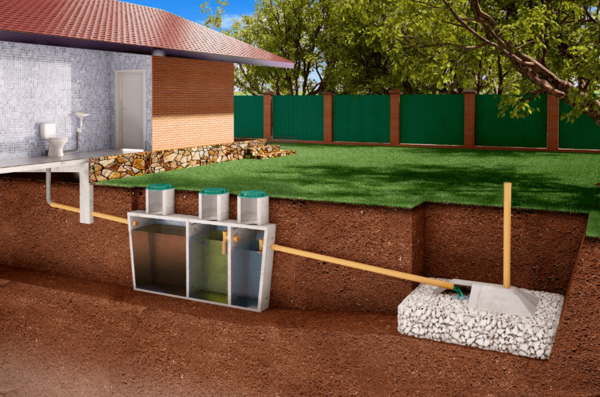
Septic tank inspections are crucial for homeowners who rely on septic systems for wastewater treatment. In this article, we will explore the importance of septic tank inspections, the factors affecting inspection costs, and how to choose the right provider for your needs.
Overview of Septic Tank Systems
Septic tank systems serve as an alternative to public sewer systems, treating and disposing of wastewater on the property. They consist of a septic tank and a drain field, working together to break down waste and safely disperse it into the soil. Common types of septic systems include conventional, chamber, and aerobic treatment units.
Why Septic Tank Inspections Matter
Regular septic tank inspections are essential for several reasons:
A. Ensuring proper functioning of the system
B. Identifying potential issues early, preventing costly repairs
C. Maintaining a healthy living environment by preventing contamination
D. Complying with local regulations and maintaining property value

Types of Septic Tank Inspections
There are three primary types of septic tank inspections:
A. Visual inspection: A basic evaluation of the system’s components and their condition.
B. Full inspection: A more in-depth assessment, including the tank’s interior and the drain field.
C. Hydraulic load test: A test to evaluate the system’s ability to handle a large volume of water.
Factors Affecting Septic Tank Inspection Costs
The cost of a septic tank inspection can vary depending on several factors:
A. Type of inspection
B. Size and complexity of the septic system
C. Geographic location
D. Accessibility of the septic tank
Average Costs of Septic Tank Inspections
Inspection costs can range from $100 to $500, depending on the type of inspection:
A. Visual inspection costs: $100 – $200
B. Full inspection costs: $250 – $400
C. Hydraulic load test costs: $300 – $500
Type of Inspection Description Average Cost Range
| Visual Inspection | A basic evaluation of the system’s components and their condition. | $100 – $200 |
| Full Inspection | A more in-depth assessment, including the tank’s interior and the drain field. | $250 – $400 |
| Hydraulic Load Test | A test to evaluate the system’s ability to handle a large volume of water. | $300 – $500 |
How to Choose the Right Septic Tank Inspection Provider
When selecting a septic tank inspection provider, consider the following:
A. Verify credentials and experience, ensuring they are licensed and knowledgeable.
B. Read reviews and testimonials from past clients.
C. Compare prices and services from multiple providers.
D. Request a detailed quote that outlines the scope of the inspection.
Preparing for a Septic Tank Inspection
To prepare for an inspection:
A. Locate the septic tank and drain field.
B. Clear the area around the tank, providing easy access for the inspector.
C. Schedule the inspection at a convenient time.
What to Expect During and After the Inspection
During the inspection, the provider will assess the system’s components and overall condition. Afterward, they will provide a detailed report outlining their findings. If issues are identified, discuss the report with the inspector and consult with professionals to determine the best course of action for repairs or maintenance.
Conclusion
In conclusion, septic tank inspection costs can vary based on factors such as the type of inspection, the septic system’s size and complexity, and the geographic location. Regular inspections are vital for maintaining a functional septic system, identifying potential issues early, and complying with local regulations. Take the time to research and choose a qualified inspection provider to protect your investment and ensure a healthy living environment.
FAQs
How full should my septic tank be?
A septic tank is designed to hold both liquids and solids. The liquid level in a septic tank should be just below the outlet pipe leading to the drain field, which is typically around 85% to 95% full. The solids, which include sludge and scum, will accumulate at the bottom and the top of the tank, respectively. Regular septic tank pumping is necessary to remove the accumulated solids and prevent them from entering the drain field.
What materials are needed to build a septic tank?
Septic tanks can be constructed using various materials, including:
A. Concrete: Strong and durable, concrete is a common choice for septic tanks. However, it is also heavy and susceptible to cracks and leaks over time.
B. Fiberglass: Lightweight and resistant to corrosion, fiberglass tanks are less prone to cracking than concrete but can be more expensive.
C. Polyethylene (plastic): Plastic tanks are lightweight, easy to install, and resistant to corrosion. However, they may be less durable and more susceptible to damage than concrete or fiberglass.
D. Steel: Less commonly used today due to corrosion issues, steel tanks have largely been replaced by other materials.
Other materials needed for a septic system include PVC or ABS pipes for connecting the tank to the house and the drain field, as well as gravel and perforated pipes for constructing the drain field.
How do you measure sludge in a septic tank?
Measuring the sludge level in a septic tank can be done using a “sludge judge” or a similar tool. A sludge judge is a long, clear plastic tube with a valve at the bottom that allows you to take a sample of the tank’s contents. By inserting the tube into the tank and opening the valve, you can collect a cross-sectional sample of the sludge, scum, and liquid layers. The thickness of the sludge layer can then be measured on the tube to determine if the tank needs pumping. Alternatively, a professional septic service provider can be hired to measure the sludge level during a routine inspection.
How does a septic tank work?
A septic tank is an underground chamber designed to treat wastewater from a household. It works by separating solids from liquids and providing a controlled environment for anaerobic bacteria to break down the solid waste. Wastewater flows from the house into the septic tank, where heavier solids (sludge) settle to the bottom and lighter materials (scum) float to the top. The liquid between the sludge and scum layers, called effluent, flows through an outlet pipe into the drain field, where it is slowly released into the soil for further treatment by natural processes. The sludge and scum layers must be periodically pumped out to prevent them from overflowing into the drain field and causing system failure.
Related Articles:
How To Avoid Capital Gains Tax When Selling a House?
Earnest Money Explained: What Is a Good Faith Deposit?
7 Top ‘We Buy Houses’ Companies in Alabama: A Comprehensive Guide
Florida Housing Market Predictions 2023: What to Expect
The Complete Guide to Sewer Line Inspection Costs
A sewer line inspection is an essential aspect of homeownership that is often overlooked… READ MORE
